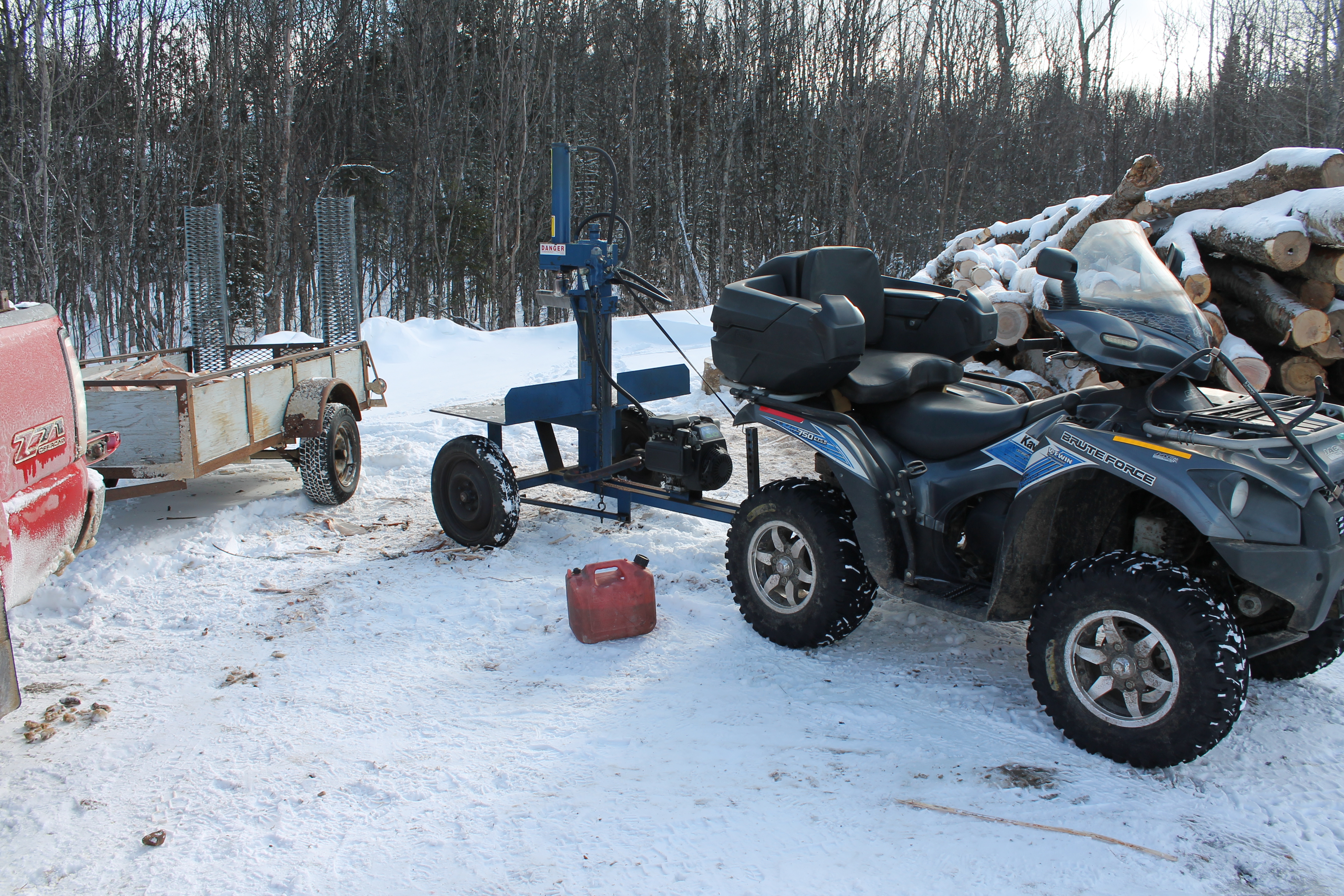D Chaplin
ArboristSite Lurker
- Joined
- Nov 11, 2014
- Messages
- 31
- Reaction score
- 10
Good evening,
I am fairly new to this site but a mildly experienced wood splitter. I am trying to identify what kind of valve the Powersplit log splitters use. I put a link below for reference as to what i am talking about. All of their splitters have a fabricated foot pedal to activate the cylinder (a chain from the pedal pulls down and activates the valve similar to a handle being pulled it seems). When you step on the pedal the cylinder extends and when you let off (at any point) it retracts automatically. Once the cylinder retracts all the way, the return circuit disengages. If you listen to the engine RPM in the video you can here it. It bogs slightly when the cylinder is extended (stepped on pedal), they let off and it retracts, and as soon as the cylinder is fully retracted, the valve kicks into neutral (I assume) and the RPM's go back up to full.
I called a reputable online hydraulic company today and talked to their customer service (even showed them the video) and they weren't sure what kind of valve would operate like this. Any chance we have a few hydraulic experts lurking around this forum?
I am fairly new to this site but a mildly experienced wood splitter. I am trying to identify what kind of valve the Powersplit log splitters use. I put a link below for reference as to what i am talking about. All of their splitters have a fabricated foot pedal to activate the cylinder (a chain from the pedal pulls down and activates the valve similar to a handle being pulled it seems). When you step on the pedal the cylinder extends and when you let off (at any point) it retracts automatically. Once the cylinder retracts all the way, the return circuit disengages. If you listen to the engine RPM in the video you can here it. It bogs slightly when the cylinder is extended (stepped on pedal), they let off and it retracts, and as soon as the cylinder is fully retracted, the valve kicks into neutral (I assume) and the RPM's go back up to full.
I called a reputable online hydraulic company today and talked to their customer service (even showed them the video) and they weren't sure what kind of valve would operate like this. Any chance we have a few hydraulic experts lurking around this forum?


























































